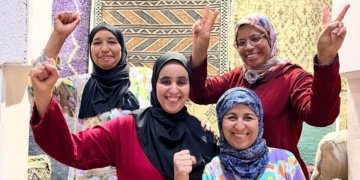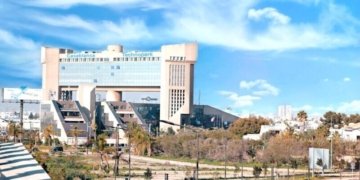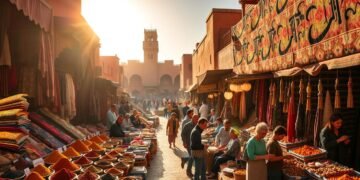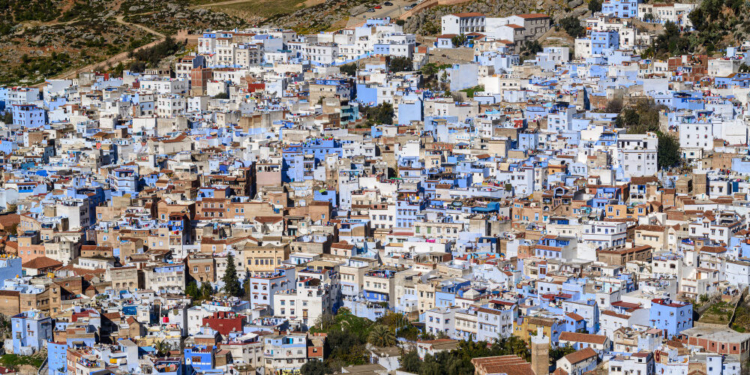Chefchaouen, known as the Blue Pearl of Morocco, is a captivating destination nestled in the Rif Mountains. Its historic medina, painted in various shades of blue, offers visitors a glimpse into Morocco’s rich past and vibrant present.
History of Chefchaouen Medina
Chefchaouen’s history dates back to the 15th century when it was founded as a small fortress to fend off Portuguese invasions. Over the centuries, the city grew into a melting pot of cultures, influenced by Spanish, Moorish, and Jewish settlers. The distinctive blue color of the medina is said to have been introduced by Jewish refugees who sought refuge from the Spanish Inquisition in the 15th century. They believed that painting the buildings blue would remind them of the sky and serve as a symbol of divinity and protection.
Architecture and Design
The medina’s architecture reflects a blend of Moroccan and Andalusian influences, characterized by narrow alleys, intricately designed doorways, and ornate tilework. As visitors wander through the labyrinthine streets, they’ll encounter charming blue-washed buildings adorned with vibrant potted plants and colorful textiles, creating a picturesque backdrop for exploration.
Culture and Tradition
Amidst the blue-washed walls, Chefchaouen’s medina bustles with the activity of local artisans selling their handmade crafts, from colorful textiles to exquisite pottery. Visitors can witness traditional Moroccan craftsmanship firsthand, with artisans demonstrating age-old techniques passed down through generations. The medina also hosts vibrant markets where locals gather to buy and sell fresh produce, spices, and handmade goods, offering a glimpse into daily life in Chefchaouen.
Daily Life in Chefchaouen
Visitors can immerse themselves in the local culture by exploring the bustling markets, sampling traditional Moroccan cuisine, and engaging with friendly locals. The medina is dotted with cozy cafes and restaurants serving up authentic Moroccan dishes, from savory tagines to sweet pastries. As evening falls, the sound of traditional music fills the air, inviting travelers to join in the lively festivities and experience the warmth and hospitality of Chefchaouen’s residents.
Tourist Attractions
Beyond its charming streets, Chefchaouen offers a wealth of attractions, including the iconic Kasbah, a 15th-century fortress that offers panoramic views of the city and surrounding mountains. Visitors can also hike to the nearby Rif Mountains or explore the cascading waterfalls and lush valleys that dot the countryside. For outdoor enthusiasts, Chefchaouen’s pristine landscapes provide endless opportunities for hiking, trekking, and wildlife spotting.
Preservation Efforts
Recognizing the importance of preserving its cultural heritage, Chefchaouen has implemented various conservation initiatives to safeguard its historic medina for future generations. Local organizations work tirelessly to maintain the integrity of the city’s architecture and promote sustainable tourism practices. From restoration projects to waste management programs, these efforts aim to ensure that Chefchaouen’s beauty remains intact for years to come.
Impact of Tourism
While tourism has brought economic prosperity to the region, it has also raised concerns about preserving the authenticity of Chefchaouen’s medina and managing the influx of visitors sustainably. Local authorities are working to strike a balance between promoting tourism and protecting the city’s cultural and environmental resources. Initiatives such as limiting vehicle access to the medina and promoting responsible tourism practices aim to mitigate the negative impacts of tourism while ensuring that visitors can continue to enjoy Chefchaouen’s beauty.
Famous Blue City
Renowned for its picturesque blue facades, Chefchaouen has captured the imagination of travelers and photographers alike, making it a popular destination on social media platforms. The city’s enchanting blue streets provide a stunning backdrop for photography enthusiasts seeking to capture the essence of Moroccan culture and architecture. From sunrise to sunset, the play of light and shadow against the vibrant blue walls creates a magical ambiance that is truly unforgettable.
Visiting Chefchaouen
Travelers seeking an authentic Moroccan experience can easily reach Chefchaouen by bus or car from major cities like Tangier and Fes. The journey offers breathtaking views of the Moroccan countryside, with winding roads leading through rugged mountains and fertile valleys. Upon arrival, visitors can explore the medina at their own pace, getting lost in its maze-like streets and discovering hidden gems around every corner. For those looking to delve deeper into Chefchaouen’s history and culture, guided tours offer insights into the city’s rich heritage and traditions, with knowledgeable local guides leading the way.
Exploring Beyond the Medina
For those looking to venture beyond the medina, the surrounding countryside offers opportunities for hiking, trekking, and exploring traditional Berber villages. From guided excursions to self-guided hikes, there are plenty of ways to experience the natural beauty and cultural richness of the Rif Mountains. Visitors can immerse themselves in the tranquility of the countryside, with its rolling hills, fertile valleys, and panoramic vistas stretching as far as the eye can see.
Sustainability Initiatives
In recent years, Chefchaouen has implemented sustainable tourism practices, including waste management programs and eco-friendly accommodations, to minimize its environmental footprint. From recycling initiatives to renewable energy projects, the city is committed to preserving its natural resources and reducing its impact on the environment. Additionally, community-based tourism initiatives empower local residents to actively participate in tourism development, ensuring that the benefits of tourism are shared equitably among all members of the community.
Future Prospects
As Chefchaouen continues to attract a growing number of tourists, the challenge lies in balancing development with preserving the city’s unique charm and cultural identity. Local authorities are working to develop sustainable tourism strategies that promote economic growth while safeguarding the city’s natural and cultural heritage. By investing in infrastructure improvements, promoting responsible tourism practices, and engaging with local communities, Chefchaouen aims to ensure that its beauty and authenticity endure for generations to come.
Conclusion
In conclusion, Chefchaouen Medina stands as a testament to Morocco’s rich cultural heritage and timeless beauty. Whether wandering through its azure streets or admiring its stunning vistas, visitors are sure to be captivated by the magic of this enchanting blue city. With its vibrant culture, rich history, and breathtaking landscapes, Chefchaouen offers a truly unforgettable experience that will leave a lasting impression on all who visit.
FAQs
Chefchaouen’s medina is renowned for its distinctive blue color scheme, which is believed to have been introduced by Jewish refugees in the 1930s as a symbol of divinity and protection. This blue hue, ranging from sky blue to deep indigo, creates a surreal atmosphere that sets Chefchaouen apart from other Moroccan cities.
Travelers can reach Chefchaouen by various means of transportation. The most common route is by bus from major cities like Tangier, Fes, or Casablanca. Alternatively, private taxis or rental cars provide flexibility for those exploring Morocco independently. Additionally, some tour operators offer guided excursions to Chefchaouen as part of larger itineraries.
Visitors to Chefchaouen can indulge in a variety of traditional Moroccan dishes infused with local flavors. Some must-try specialties include:
Tajine: A flavorful stew cooked in a distinctive conical clay pot, often featuring tender meat, vegetables, and aromatic spices.
Couscous: A staple dish made from steamed semolina grains, typically served with a hearty meat or vegetable stew.
Pastilla: A savory-sweet pastry filled with layers of spiced meat, almonds, and fragrant herbs, topped with powdered sugar and cinnamon.
Harira: A hearty soup made from tomatoes, lentils, chickpeas, and spices, often enjoyed during Ramadan as a traditional iftar meal.
Moroccan Mint Tea: A refreshing beverage brewed with fresh mint leaves and green tea, served hot and sweetened to taste.
Yes, several tour operators offer guided tours of Chefchaouen’s medina and surrounding attractions. These tours typically include knowledgeable local guides who provide insights into the city’s history, culture, and landmarks. Additionally, guided tours may offer opportunities to explore off-the-beaten-path locations, engage with local artisans, and discover hidden gems within Chefchaouen’s enchanting blue streets.




























